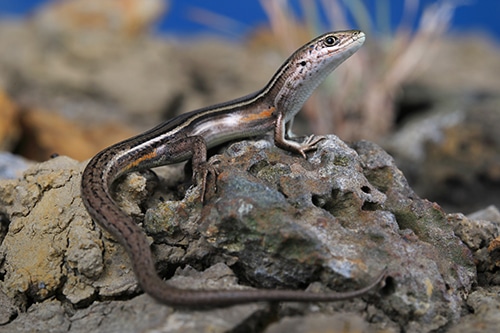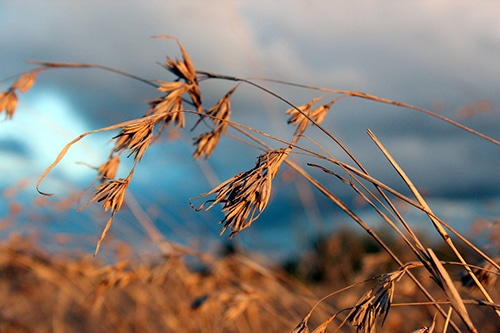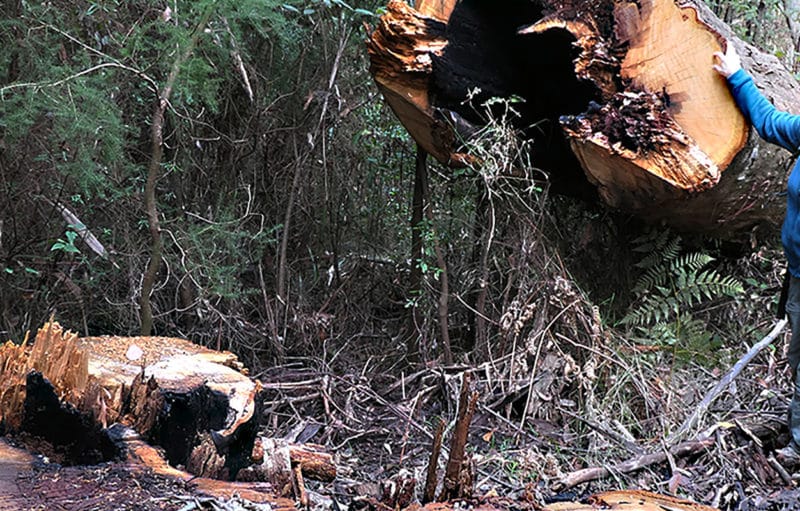PARK WATCH Article March 2023 |
Land acquisition has failed to obtain the best bits of the Western Grassland Reserve. That has to change. It’s time for some big thinking, says Grassy Plains Network Facilitator, Adrian Marshall
Imagine you have a big paddock. It was once decent grassland. But now, wherever you stand, more than half of the vegetation is weed. And not just one weed species, but a mix of Serrated Tussock and Chilean Needle Grass and some nasty newer ones like Cane Needle Grass.
In that paddock there are some good patches of Kangaroo Grass and a few native herbs resisting the weed invasion. Everywhere around that paddock is also covered with weeds, and the seeds blow in year after year. Imagine you’ve got ten years of funding to do whatever you want to improve the conservation quality of this paddock. What are you going to aim to achieve? How do you reduce the weeds without killing the natives? If you kill the weeds how do you stop them growing back?
Now imagine you have a hundred paddocks like that. Each one has a different mix of weeds, different site conditions: some are rocky, others have been cropped, some have wetlands in them, some farm dams, there are ephemeral creeks and stony rises. What you do on the first paddock isn’t going to have the same results in any other paddock.
After ten years, the funding you have will dry-up and the paddocks will be handed to Parks Victoria. That’s the offset-style deal these paddocks are managed under. But after those ten years’ intensive management, there will still be weeds everywhere and the grasslands will still need intensive management, but there won’t be the money for that. Nevertheless, Parks Victoria will be told to turn it into a national park. Welcome to the Western Grassland Reserve!

Reserve is at a crossroads
The bleak vision described above is one of the big take-home messages to come out of a recent series of online forums and site visits to the Western Grassland Reserve run by the Grassy Plains Network in conjunction with the Melbourne Strategic Assessment team at DEECA.
Conservationists warned of the weed explosion back in 2010, and since then little has been done by those in charge. But the latest mapping of the weed extent is truly shocking – more than 50 per cent of the reserve is majority weed cover. The grim reality is that we will be living with high weed coverage for a long time.
Huge and complex
It is both daunting and magnificent to see the to-the-horizon scale of the future Western Grassland Reserve – 15,000 hectares is immense. And the complexity is off the charts.
The Western Grassland Reserve might well be the most complex restoration project in Australia’s history.
Firstly, there’s a dozen weed species, including one we’ve haven’t seen before (African Thistle, anyone?). The Reserve includes Bunurong, Wurundjeri and Wadawurrung country, with rich cultural heritage including an ancient stone observatory that could genuinely be the oldest astronomical structure in the world. There are four local governments involved, and it’s set-up under a joint Commonwealth-Victorian agreement. It’s a working landscape slowly being purchased over dozens of years.
There’s also 1000 hectares of land with unexploded ordinance (Live Bomb Range Road is called that for a reason). The land is a patchwork of former uses, some de-rocked, some fertilised, some grazed hard, some cropped, each use leaving different conditions to consider.
Plus there are competing conservation priorities, like how Golden Sun Moth loves Chilean Needle Grass. And the Public Acquisition Overlay means the land bankers, who own much of this land right next to Melbourne’s rapidly growing urban fringe and who want to maximise their real estate profits, can bog progress down for years in court (they won’t win, but that doesn’t stop them trying).
The Western Grassland Reserve might well be the most complex restoration project in Australia’s history.

It’s time for triage
What is clear is the need to focus protection and recovery efforts on the good bits. A vast application of the ‘Bradley Method’, working from the good bits out, somehow pushing weeds back with species-rich grassland as we go. At the same time, the expanses of weed-dominated land need to be stabilised – we don’t want them getting worse.
Land acquisition has failed to obtain the best bits of the Western Grassland Reserve. That has to change.
It’s time for some big thinking. We need to revive the expert advisory panel that was inexplicably disbanded years ago. We need to move past just spraying weeds. We need to use every tool we have to control biomass and shift the dominant grass species to a more native mix. Grazing, fire, improving soil health, you name it we must do it; rigorously, scientifically, relentlessly. We need universities, NGOs and Traditional Owners involved alongside the contractors who plan and manage the on-ground works, so we learn together. We need a workforce of grassland specialists, which at the moment is lacking.
We urgently need a restoration strategy to create a future for Victoria’s native seed industry so that we will have enough seed to do what we have to do – and that’s a hundred times as great as the seed production capacity we have today. Direct seeding is currently the only cost-effective way to replace the weeds in that vast landscape. We’ve known that for a decade. Maybe something’s coming together but it’s wait and see.
We need research. Once upon a time the now disbanded Technical Advisory Group came up with a research program, but that was never acted on by those in charge. We’ve lost a decade of opportunities because of failed governance. One good research discovery could save ten of millions of dollars. Seriously, the Western Grassland Reserve is big money, billions over time.
The dominance of weed species does not mean we should give up on the Western Grassland Reserve. Regardless of their country of origin, exotic grasses still provide habitat and resources for invertebrates, reptiles, birds and mammals. They still improve soil health and sequester carbon.
Time for engagement
The events the Grassy Plains Network proposed and ran last year in conjunction with DEECA were one of the first engagement activities on the Western Grassland Reserve to have been run in years. And how good did it feel to stand out there and actually have some dialogue!
A key message from participants was the need for a real partnership with stakeholders and for more engagement with the community. We think what’s most needed are a some highly visible in-your-face fantastic restoration sites. Highly floral, lots of information, education and signage. Well-considered locations, places people can see the possibilities of a good future, understand what a well-restored and managed grassland can really deliver.
Time to move past the failure
It’s time to learn from mistakes. We’ve had the Victorian Auditor-General’s Office report that absolutely slammed DEECA for its failings. We’ve had the Inquiry into Ecosystem Decline and its recommendation to immediately buy the Western Grassland Reserve land. We’ve seen the weed mapping.
There is no more time left to pretend it is all okay. Major change is essential and urgent.
We have a new federal government and minister. We have a new state environment minister. Let’s fix this mess and be remembered for something good.
Protect our critically endangered grasslands
- Read the latest full edition of Park Watch magazine
- Subscribe to keep up-to-date about this and other nature issues in Victoria
- Become a member to receive Park Watch magazine in print
- Sign-up to the Grassy Plains Network email list
